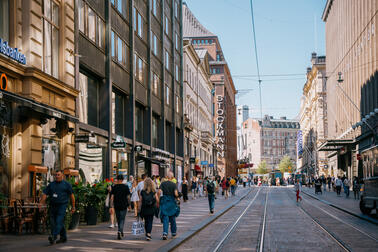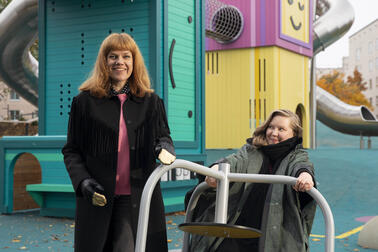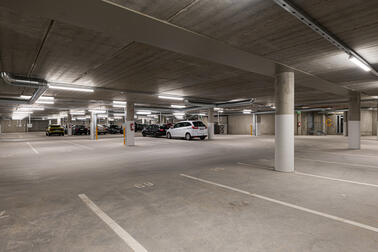
The vitality of Helsinki city centre has been studied with city centre vitality surveys since 2016. The survey monitors the number, operation, occupancy rate and opening hours of street-level shops and shopping centre business premises in a designated city centre area.
Empty business premises have decreased: number of shops and restaurants growing
The vitality survey carried out at the turn of April and May shows that the development of Helsinki city centre over the past year has been positive. Notable positive observations include the decrease in available business premises and the fact that the number of shops and restaurants that are open on Saturdays has started to increase.
“The development of restaurant services, in particular, has been positive. The number of restaurants and cafés that operate all year round and are open on Saturdays reached 697, which is a new record. With this number, Helsinki city centre is clearly Finland's largest concentration of restaurants,” says Senior Advisor Timo Hämäläinen from the City of Helsinki Economic Development Department.
Positive development in visitor and tourist numbers in the city centre as well
The number of pedestrians in the city centre has almost recovered to pre-COVID levels. The total number of pedestrians recorded at the measuring points on Aleksanterinkatu and at the Old Student House during January–May this year was 99% of what it was during the same period in 2019.
“On the other hand, the annually conducted mobile data survey, which is based on domestic mobile subscriptions, indicates that the total number of people visiting the city centre is still approximately one third lower than it was before the pandemic. The area examined in the mobile data survey is much larger than the one covered by the point-based pedestrian measurements, so the impacts of trends, such as increased remote work, are more clearly visible,” explains Senior Advisor Timo Hämäläinen.
When it comes to the number of tourists, pre-COVID records have already been broken. In 2024, tourist accommodation establishments in Helsinki recorded a total of 4.55 million overnight stays, which is an all-time record. In January–April this year, the number of overnight stays recorded per month has been higher than ever before for every month.
City centre considered pleasant especially by young people and those visiting it often
According to the recent Helsinki Barometer published on 11 June, half of Helsinki residents say that they currently find the city centre to be pleasant. The city centre is generally assessed as being more pleasant by residents who live there or visit it often.
Young respondents, in particular, find the recreational opportunities offered by the city centre to be appealing. Young people also view the city centre more positively in general than older residents. However, the regularly carried out Helsinki Barometer also reveals that the experiences of city residents regarding the development of the city centre vary in many ways depending on the perspective and age of the respondents.
A time of change for city centres
Helsinki city centre, like other city centres, has been undergoing a transformation in recent years that is particularly caused by changes in behaviour and consumption accelerated by the pandemic and the general economic decline.
“The role of retail, especially fashion and accessory shops, has been decreasing. On the other hand, the role of services, especially cafés, restaurants and beauty and wellbeing services, is growing,” says Hämäläinen.
“In the middle of this transformation of city centres, both Helsinki and businesses want to strengthen the vitality of and experiences offered by the city centre, as indicated by the reports on city centre collaboration published back in March,” says Hämäläinen.
The vitality survey was carried out by Voittajakaupungit - Winning Cities Oy Ltd, using a survey method that it was commissioned to develop by Elävät kaupunkikeskustat ry. Elävät kaupunkikeskustat ry is a nationwide network of city centre developers that was established in 1997. The annual vitality survey provides valuable information on the development of the city centre and is a useful part of a set of complementary indicators that are used to monitor the development of city centre vitality.


